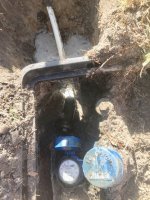Robert Snow
Architect
My GE 40gal water heater is 23 years old. I replaced the anode rod with a magnesium one at the 10 year mark. The original was almost completely gone. After 5 years I took it out and it looked pretty gnarly. It could have gone another few years, but I replaced it with a new one. Now, another 8 years has passed. I replaced the thermocouple once and when the gas company ran new lines in the street last year they changed it again because they could not get it to stay lit. We have city water and there is never much sediment when I do drain the tank using the plastic valve that came with the heater. The basement is unfinished and there is a sump pit and pump nearby. I never did maintenance on our previous two water heaters. They didn't last nearly as long and each failed suddenly, with significant leakage but did no damage. I was able to replace each of them within a day. I plan to shut off the water to the house whenever we are away on vacation. If experience holds, the rod should be gone in a couple of years and the tank would lose its protection. If I change the rod on such an old tank, it might be too fragile and spell the end. Should I leave sleeping dogs lie or change the rod at a time that would be convenient to replace the heater just in case things don't go well?
Last edited:


